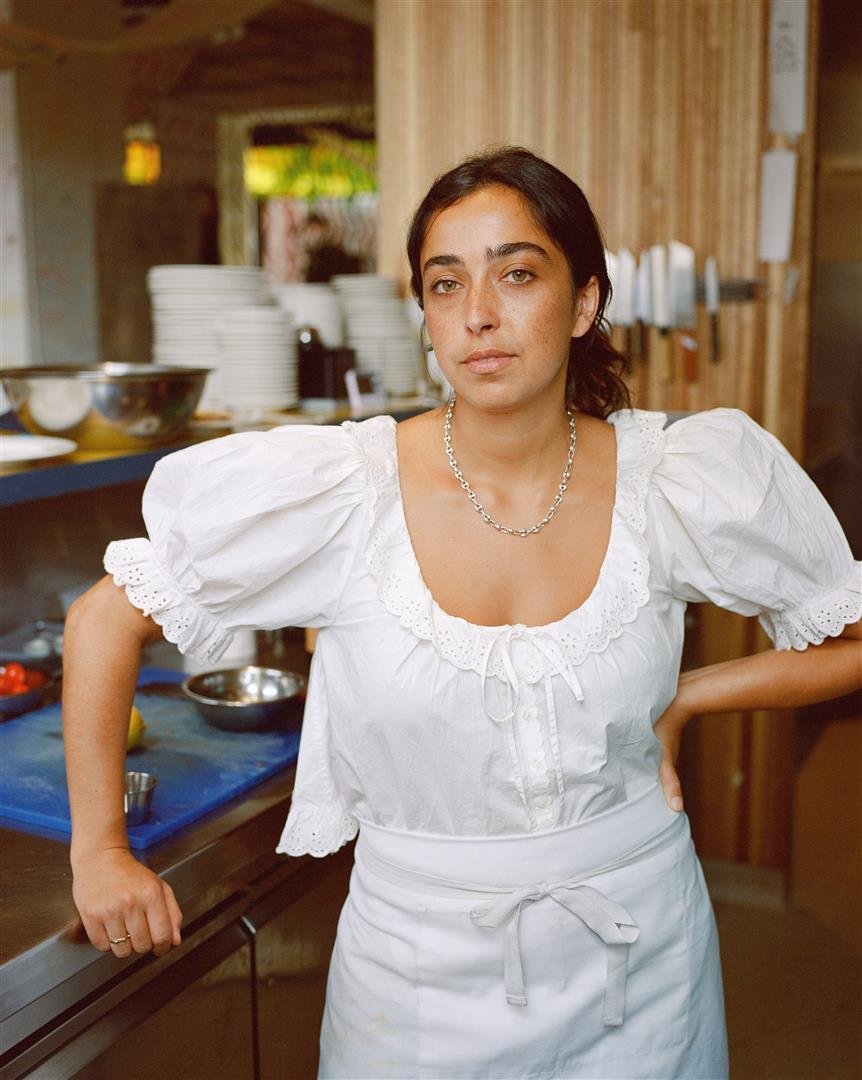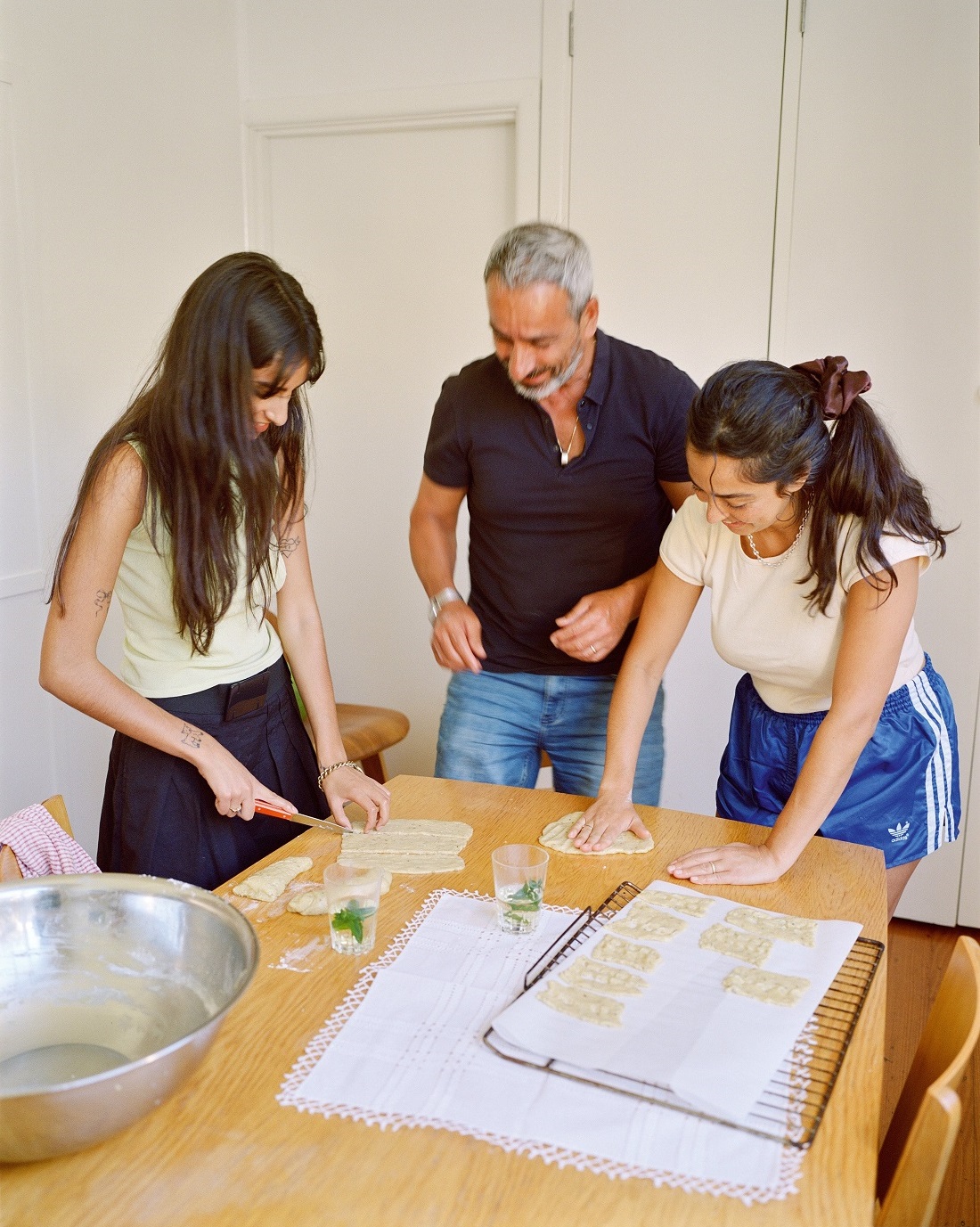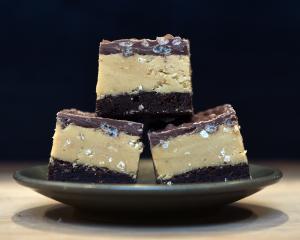
The Australian self-taught chef, of Moroccan and Eastern European Jewish heritage, says the approach to cooking at home should be like this — there should be good food and delicious wines and the meal should be well considered, but keep the menu simple and honest.
"There is, I think, too much pressure to play host when having a ‘dinner party’.
"It isn’t necessarily the perfectly roasted chicken that will leave an impression, but instead the ease at which you put your guests."
The food will taste so much better if a person cooks what they want to eat and what excites them, she says.
"Unlike the restaurant kitchen there is no need for perfection when you cook at home.
"If the food is full of flavour, and there is romantic lighting in the kitchen and dining room and you and your guests are giggling and saying yum, that is what cooking and serving a meal should be."
Her book Ellie’s Table is an attempt to put into writing her family heritage and the ever evolving dishes she has explored in her Hope St Radio restaurant in Melbourne and home kitchen.
Many of the recipes and photos in the book were shot in Rome.
"For me, cooking isn’t always about the presentation of the final plate — it is the little moments along the way that create the pleasure.

Her menus are personal and reflect her home cooking, whether it is a bowl of fresh pasta or a bowl of couscous with chickpeas and broth.
"It’s a reflection of how I cook and eat with and for those that I love."
She urges cooks to strengthen their tastebuds by tasting the dish throughout the cooking process.
"Think about salt, texture and acidity as you cook."
But at the end of it all, she wants diners to experience feeling of warmth and fullness.
"It is the hazy delight you feel after a good meal, tipsy and rounder-bellied than before you sat down at the table.
"Your jeans are now appropriately unbuttoned and the table is stained with sauce and wine.
"They make cooking for others and yourself a pleasurable experience that is not just about the plate of food."
The Book
This is an edited extract from Ellie’s Table by Ellie Bouhadana, published by Hardie Grant Books. Available in stores nationally. Photography by Lucia Bell-Epstein.
 Raiff
Raiff

Raiff are simple Moroccan tea biscuits made with sesame and fennel seeds. Although sesame and fennel may seem an odd combination for a biscuit, they pair well together — especially when the raiff are accompanied by a pot of fresh, sweet mint tea. I love creating the ruffled imprint down the centre by gently pinching the dough. My dad and I make raiff together. The dough comes together quickly and each biscuit looks slightly different depending on who is slicing and pinching the mixture. These biscuits are a familiar, nostalgic bite for me. Serve them with fresh fruit, hot tea and maybe a plate of dates too.
Makes about 65 biscuits
Ingredients
250ml (1 cup) extra-virgin olive oil
250ml (1 cup) water
6 Tbsp sesame seeds
2 Tbsp fennel seeds
1 tsp salt
115g (½ cup) caster sugar (superfine)
3 tsp baking powder
3 tsp vanilla extract
600g plain (all-purpose) flour, plus you may need an extra 50g
Method
Preheat the oven to 200°C .
To make the dough
Put everything besides the flour in a large bowl and stir together. The water and oil will remain separate, but will come together when you add the flour.
Add the flour a cup at a time, constantly bringing the ingredients together with your hands or a wooden spoon, until you have added all of the flour. The mixture should feel soft and slightly wet, but not sticky, so add a little more flour if it needs it until you reach that consistency.
To roll the biscuits
When the dough has come together, roll it into a log about 50cm long on a lightly floured surface. Slice the log into six pieces, then using either a rolling pin or the palms of your hands, roll each piece of dough into a rectangle about 2.5mm thick.
Slice each rectangle into pieces about 3cm wide. Then, beginning at the top of the biscuit, use your thumb and index finger to pinch a sort of seam down the centre to create a ruffled pattern. Repeat for all of the biscuits, then place them on baking trays lined with baking paper.
To bake and serve
Bake for about 15 minutes until golden. Keep an eye on them to make sure they don’t burn. Leave them to cool completely on a rack. They may be a little soft when you first take them out of the oven, but they will crisp up as they cool down.
Note: The raiff will keep in an airtight container for a couple of weeks.
 Chicken soup
Chicken soup

I am not sure that there is anything cosier or more beautiful than a big pot of chicken soup simmering on the stove. The broth sits on the stove all day, gently warming your home with the scent of carrot, celery, onion and dill. Chicken necks are essential to this rich broth.
Makes about 4 litres/serves about 8
Ingredients
3kg mix of raw chicken carcasses, including chicken necks and marrow bones
100g butter (optional; to keep this recipe kosher, substitute 170ml/⅔ cup extra-virgin olive oil)
30ml extra-virgin olive oil
3 onions, finely diced (set aside the onion skins)
½ bunch celery, finely diced (reserve the inner leaves of the celery heart for garnish)
3 carrots, peeled and finely diced
2 Tbsp peppercorns
6 bay leaves
1 garlic bulb, sliced in half horizontally
5 litres (20 cups) cold water
1/2 bunch flat-leaf (Italian) parsley
1 bunch dill (set aside a few sprigs for garnish)
3 extra carrots, peeled, sliced on an angle into 3-4 pieces
Extra-virgin olive oil to serve
Note: The onion skins give the broth a golden hue.
Method
First clean the chicken carcasses just like my grandmother taught me. Cover the chicken in a generous amount of salt and let stand for 10 minutes. Rinse off the salt and place the chicken in a bowl. Cover with tap water and leave for another 10 minutes, then drain and set aside.
Over a medium heat, melt the butter and warm the extra-virgin olive oil in a large stockpot it needs to be big enough to hold all the ingredients listed, plus 5 litres of water. Put the onions, celery and finely diced carrots in the pot, together with the peppercorns and bay leaves, and sweat the vegetables for about 15 minutes.
Once the vegetables have softened and smell fragrant, add the garlic and stir. Season with a small amount of salt.
Put the chicken carcasses in the pot (be mindful about contamination, soap down any surface that comes into contact with the raw chicken) and the onion skins, then cover with the cold water.
Bring to the boil, then reduce to a gentle simmer. Cook for at least 3 hours (between 3 and 5 hours is ideal). Refrain from stirring the soup during that time: the less you stir, the clearer the final broth will be. Skim off any foam that forms on the surface.
After about 2 hours of cooking the soup, season further with salt and put the bunches of parsley and dill in the pot. Gently push them down so they sit just under the surface. Add the extra carrots to the soup at this point and poach them for about 10 minutes, until they are tender. Lift them out and set them aside until you are ready to serve.
When the broth is golden, full of flavour and not watery, strain it and discard the solids. Season the broth further to taste if needed, coo land refrigerate. Once it cools there will be a layer of hard yellow fat on the top of the soup. Lift this fat cap off before serving (you can save it to rub over chicken, to cook potatoes in or to add to ragus for extra flavour).
To serve, fill each bowl with two ladles of soup and a piece of poached carrot. Top with the dill and celery leaves, a small pinch of flaky salt, freshly ground black pepper and a few drops of olive oil.
 Lamb cutlets with pan sauce
Lamb cutlets with pan sauce

It may seem simple to some, but lamb, specifically lamb cutlets marinated in cumin, paprika and good olive oil, is the meal I love most. Served with a salsa verde — in this case a combination of fresh parsley, garlic, capers, good olive oil and vinegar — I love it even more. The herbaceous sauce is also delicious poured over boiled potatoes served beside the lamb. In this recipe extra flavour is provided by making a second sauce with the juices from the meat. There is so much savouriness left in the pan after searing the lamb that it would be sad to leave it sitting there without a purpose. To make the most of those leftover juices and the brown bits stuck to the pan, you mix them with white wine, chicken stock and a splash of lemon juice to create a bright, emulsified sauce for pouring over the cutlets too.
Serves 4
Ingredients
12 lamb cutlets, fat left on (the thicker the cutlet, the better)
2 tablespoons extra-virgin olive oil
Marinade
1 tsp sweet paprika
1 tsp ground cumin
½tsp freshly ground black pepper
120ml extra-virgin olive oil
2 Tbsp soy sauce
1 tsp honey
4 garlic cloves, lightly smashed with the back of a knife
2 bay leaves, rubbed between your fingers to release the flavour
To make the marinade and prepare the cutlets
Mix the ingredients for the marinade together in a small bowl. Place the cutlets in a tray and pour the marinade over them, then massage the marinade into the cutlets and leave them to rest in the marinade for at least 2 hours or overnight.
To cook the cutlets
Take the cutlets out of the fridge 30 minutes before you want to cook them.
Heat the 2 tablespoons of olive oil in a heavy-based or cast-iron frying pan over a medium-high heat, making sure there is enough oil to cover the bottom of the pan. When the oil is extremely hot (the surface will shimmer slightly), put the cutlets in the pan in a single layer without touching. Reserve the marinade and set aside.
Sear the cutlets for 2 minutes on one side, then turn them and sear the other side for 2 minutes. Press the sides of the cutlets into the pan to sear them too. Be careful not to overcook the lamb. You want to end up with blush pink meat, and it should feel soft when you press it. Take the cutlets out of the pan and leave them to rest on a chopping board for 5 minutes. Reserve the pan juices in the pan.
Pan sauce
30 ml (1/8 cup) white wine
60 ml (1/4 cup) chicken stock (see below)
1 teaspoon lemon juice (optional)
Salsa verde to serve
To make the pan sauce and serve
While the cutlets are resting, make the pan sauce. Over a very low heat, pour the reserved marinade (including the garlic and bay leaves) into the frying pan with the lamb juices and bring the sauce to a gentle simmer for 1 minute.
Pour in the wine to deglaze the pan, and using a wooden spoon scrape any browned bits stuck to the pan into the sauce. Add the chicken stock and gently simmer until the sauce has thickened slightly and is full of flavour, about 5 minutes, tasting it and seasoning with salt if needed. Add a teaspoon or so of lemon juice to balance the acidity, if required. Take the sauce off the heat and strain it to remove the aromatics.
Slice the meat on each cutlet away from the bone and cut into slices 1.5cm thick. Plate the cutlets by laying the pieces back together against the bone so that each cutlet resembles the same shape as before you sliced it. Spoon the pan sauce over the cutlets and serve straight away with the salsa verde.
Salsa verde
Ingredients
½ bunch flat-leaf (Italian) parsley
1 tarragon sprig
½ oregano sprig
2 tsp capers, rinsed and squeezed dry
1 garlic clove
1 Tbsp red-wine vinegar
60 ml (¼ cup) extra-virgin olive oil
Parmesan to serve (optional)
Method
Pick, wash, and then dry the herbs. Roughly chop the capers.
Mash the garlic with flaky salt, then mix with the herbs, capers, vinegar and olive oil in a bowl.
Season with flaky salt and freshly ground black pepper.













